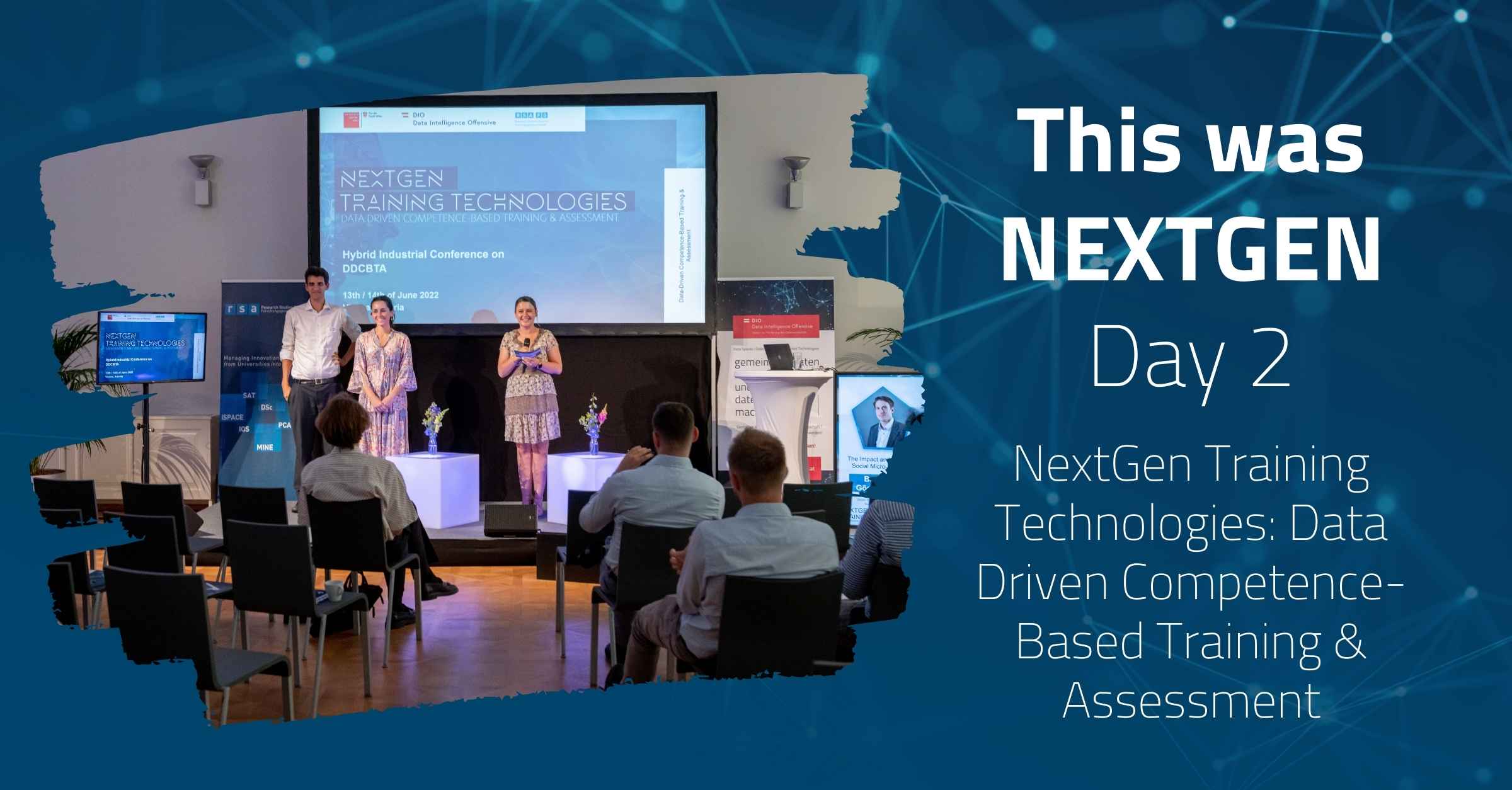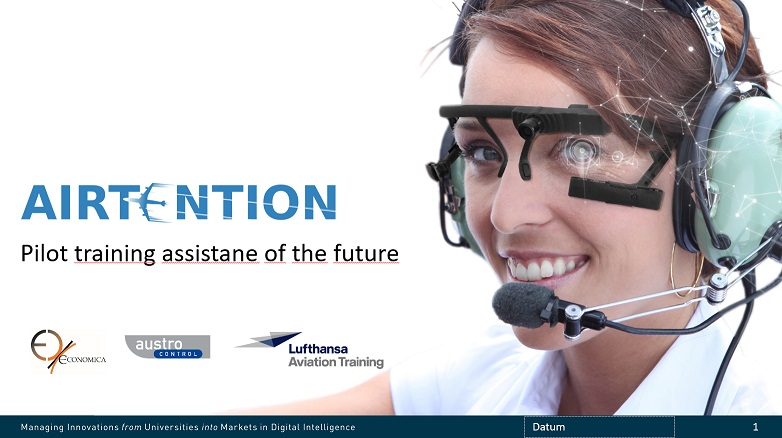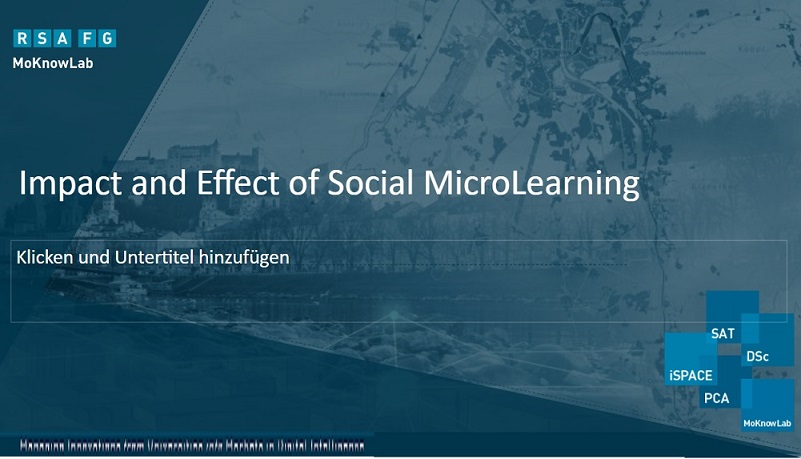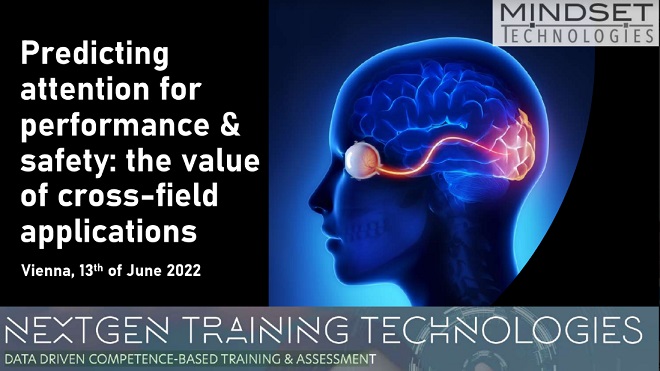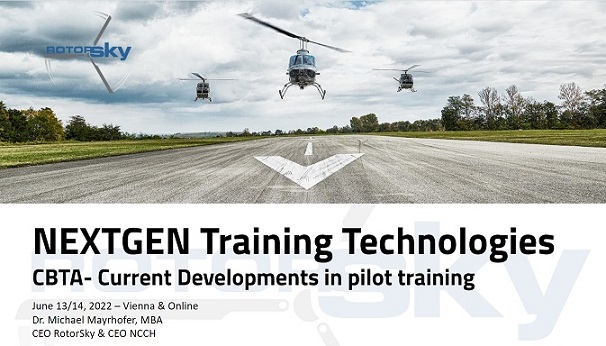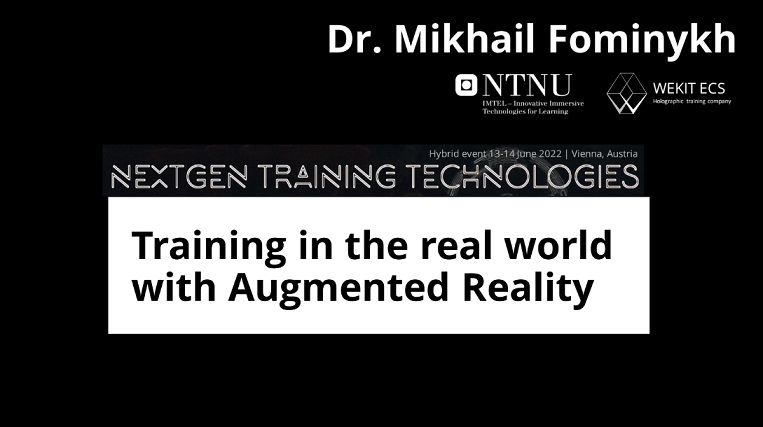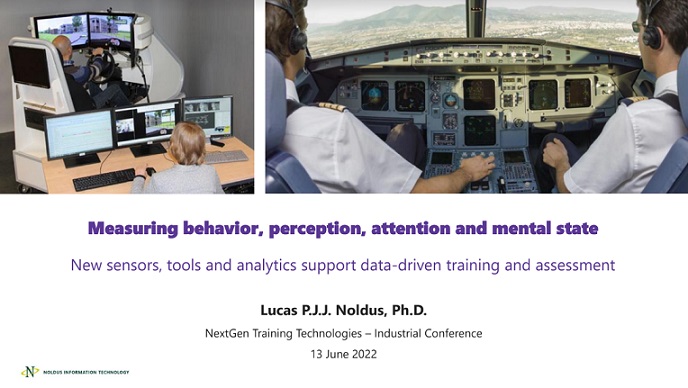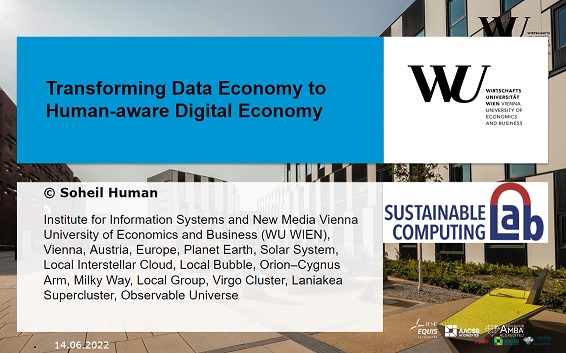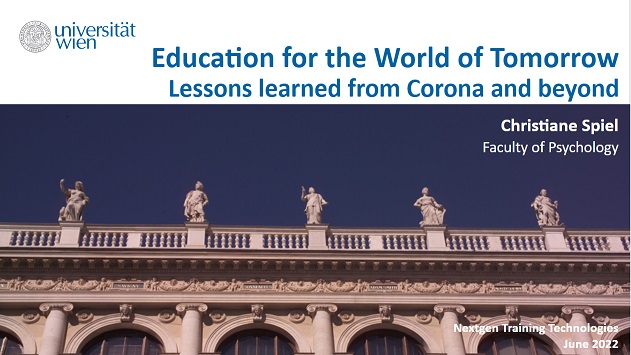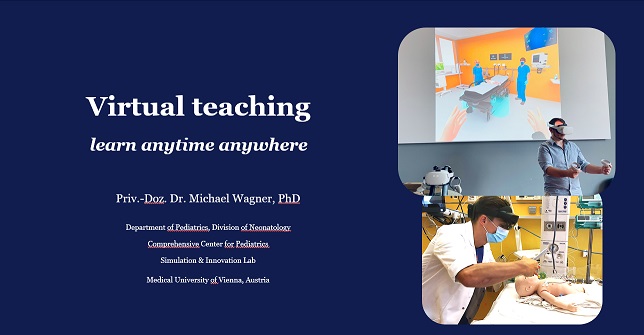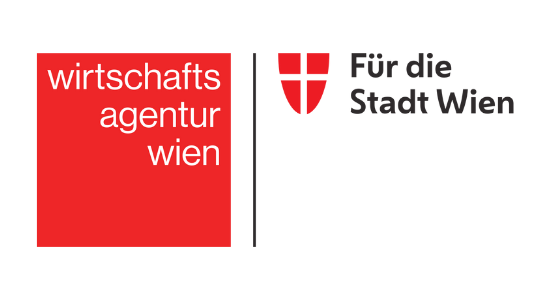14th June: Distributed work environments & Knowledge Management
Day two of the hybrid event “NextGen Training Technologies: Data Driven Competence-Based Training & Assessment” (to read about day one follow this link) began with a presentation on an interdisciplinary and multidisciplinary framework on how a transformation towards a “human-aware digital economy” can be initiated, by Soheil Human, Vienna University of Economics and Business. In this keynote, Soheil Human argued that many of the current digitization and datafication practices are highly technology- or business-centric, which can cause negative socio-cognitive consequences. Therefore, applying a human-centric approach is important.
How do you teach your med-students hands-on how to use a defibrillator when bedside teaching is impossible? The COVID-19 pandemic led to an increased use of new technologies to implement virtual bedside teaching and remote simulation-based medical education. Michael Wagner, MedUni Vienna, explained how through eye-tracking, virtual and augmented reality and the development of new training concepts location and time-independent learning was allowed in distributed work environments.
Julia Kern, Soma Reality, helped us understand human behavior in digital environments and custom made Virtual Reality (VR) solutions based on data analytics to measure and predict human behavior in VR. In the next few years, according to Julia Kern, most VR headsets will utilize eye tracking as well as EMG for enhanced social VR interaction (facial expressions). This trend will enable the next generation of VR applications – that understand, predict and adapt to the individual user.
The benefits of AI-based technologies have been evident, due to digitalisation and data driven automatization, in numerous fields. AI-based assistance systems aim to show this potential also in industrial work environments. Michael Haslgrübler, Pro²Future, presented two real-life use cases as examples for the application of AI-based assistance: safety ensuring human-machine interaction in a polymer recycling process and quality controlling activity recognition in an assembly process.
In the presentation by Haris Isakovic, Viewpoint System, we learned that the ability to translate knowledge, experiences, and intuition from a human to machine is still a largely unexplored area of research and innovation. Smart Glasses are one of the essential technological innovations that bridge the gap between human and the machine. They will be one of the key drivers behind emerging technological and socio-economic transformations, such as Society5.0, Internet-of-Practices (IoP), or Metaverse.
Paul Stanzenberger, Teammazing, showed us how knowledge management is done and how companies can prepare for this change and establish a thriving virtual work culture. Paul Stanzenberger shared innovative concepts on how to create enthusiasm, team spirit and high-performing teamwork remotely.
Augmented Reality enables learning and training like no other technology. It allows us to create learning experiences that seamlessly blend digital content into the real world. In this talk, Mikhail Fominykh, NTNU, gave us insight at the state-of-the-art methods, hardware, and software tools for designing and delivering training with Augmented Reality.
Mackenzie Himmelbauer, COO at Visions, told us:
“Artificial Intelligence can allow personalized learning and individual career paths to become reality. However, these AI systems will need multiple data points about the person to be effective and also will need an ethical and human-centric framework to make sure they truly serve the individual’s needs and do not enclose people in deterministic loops neither use their data without their knowledge or consent. We propose a way forward to make a global human-centric data sharing infrastructure happen through a concrete project where public, research and private organizations are already collaborating : Prometheus-X.”
The last keynote of the day was presented by Bernhard Göschlberger, RSA FG on the impact and effect of social micro-learning and demonstrated the results on statistically significant effects between student exam scores and social micro-learning activities. These results suggest not only that more active students perform better on exams, but also that the type of activity matters. Students, according to Bernhard Göschlberger, who design learning activities that go beyond memorizing facts consistently outperform their peers by more than 20%.




